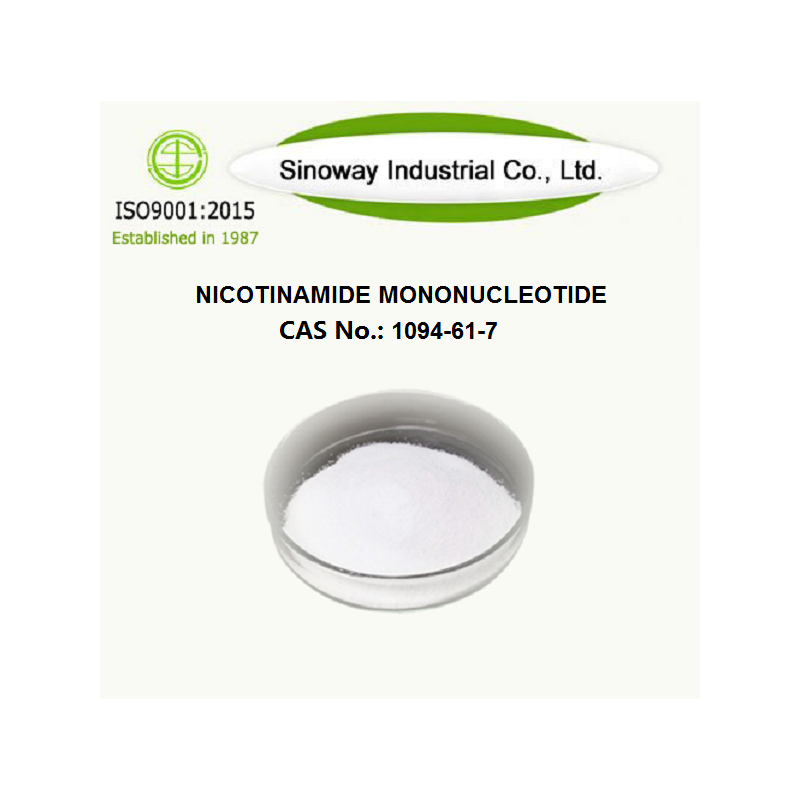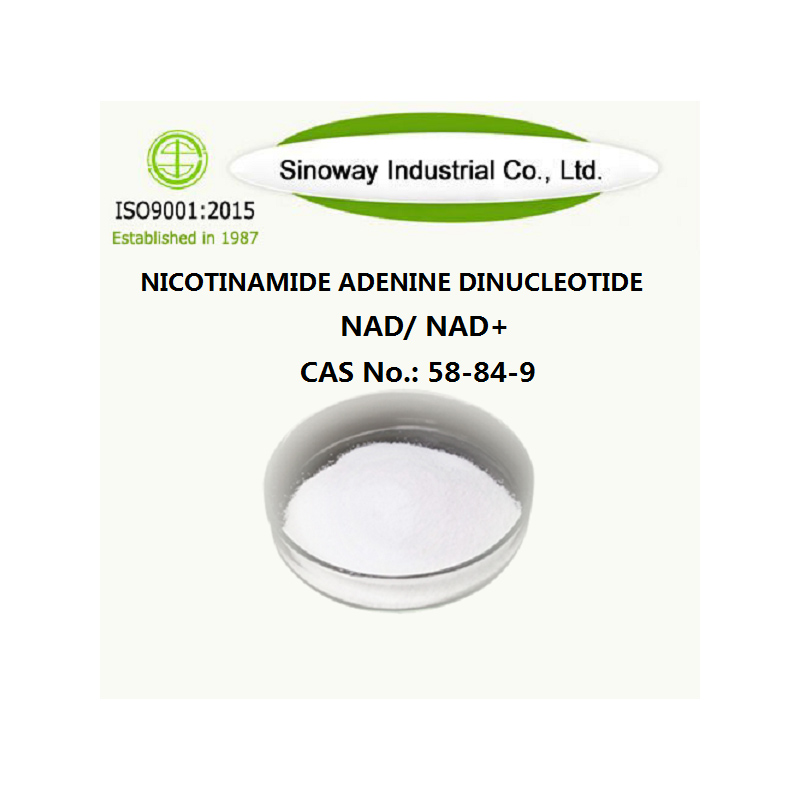|
Product Information |
|
Product name |
γ-aminobutyric acid ; Gamma aminobutyric acid ; GABA ; 4-aminobutyricaeid;4-AB |
|
CAS No. |
56-12-2 |
|
Molecular Formula |
C4H9NO2 |
|
Molecular Weight |
103.1 |
|
Quality Standard |
99% up, Food Grade |
|
Appearance |
White powder |
|
COA of γ-aminobutyric acid |
|
TEST |
SPECIFICATION |
RESULTS |
|
Appearance |
White crystalline powder |
Conforms |
|
Solution clarification |
1g sample is dissolved in 10ml water, solution should be clarified. |
Conforms |
|
Assay (on dry basis) |
≥ 99.0% |
99.35% |
|
Melting point |
196。C - 203。C |
197.5。C - 197.9。C |
|
Heavy metal |
≤ 10 ppm |
Conforms |
|
Residue Ignition |
≤0.5% |
0.36% |
|
Chloride(Q) |
≤0.10% |
Conforms |
|
Bulk density (loose) |
≤ 40ppm |
Conforms |
|
Tap density |
0.4-0.6/cm3 |
0.45/cm3 |
|
pH |
0.5-0.7/cm3 |
0.59/cm3 |
|
Microbiology |
6.5-7.5 |
7.31 |
|
Total plate count |
≤1000cfu/g |
500cfu/g |
|
Mold |
≤100 cfu/g |
Conforms |
|
Escherichia Coli |
Negative |
Conforms |
|
Conclusion |
Conforms with specification |
|
|
Usage |
γ-aminobutyric acid (Gamma-aminobutyric acid, GABA) is a non-protein amino acid, which is widely found in vertebrates, plants and microorganisms.
There are currently three production methods for GABA: chemical synthesis, plant enrichment, and biotransformation.
The reaction conditions of chemical synthesis are relatively severe, and there are chemical residues. Even if the purity is high, it is not a natural product, and is mainly used in the chemical and pharmaceutical fields.
The plant enrichment method uses the endogenous enzyme transformation of plant tissues to prepare GABA, but the GABA obtained by this method has low purity and is mostly used in the food industry. There are many GABA ingredients made from rice germ or germinated brown rice on the market to produce functional foods with functions of relieving fatigue, assisting in lowering blood pressure, and improving sleep.
The early research of the biotransformation method used Escherichia coli as the production strain. During the fermentation and culture process, the decarboxylation of glutamate decarboxylase was used to convert L-glutamic acid into GABA, and the pure GABA product was obtained after separation and purification. With the continuous development of biotechnology, some strains that also contain glutamate decarboxylase, such as yeast and lactic acid bacteria, have gradually replaced E. coli, thereby obtaining safer products.
Our GABA is fermented with our own research and development enzyme, and the purity is able to over 99%.
Function of γ-aminobutyric acid
γ-aminobutyric acid (GABA) has long been considered to be related to various stress and defense systems of plants. GABA increases as plants are stimulated, and is considered to be an effective mechanism in plants that responds to various external changes, internal stimuli, and ionic environment factors such as pH, temperature, and external natural enemies. GABA can also regulate the internal environment of plants, such as antioxidant, ripening, and preservation of plants. In recent years, GABA has also been found in plants as a signal molecule to transmit expanded information in plants. GABA has been found in soybeans, Arabidopsis, jasmine, strawberries and other plants one after another. Low concentration of GABA helps plant growth and development, while high concentration will have the opposite effect.
GABA is the most important inhibitory neurotransmitter in the central nervous system of mammals. It participates in a variety of physiological activities in the body. It has anti-anxiety, lowering blood pressure, improving liver and kidney function, accelerating alcohol metabolism, promoting brain vitality, and preventing skin aging.
(1) Calm nerves and anti-anxiety. Medical scientists have proven that γ-aminobutyric acid is an inhibitory transmitter of the central nervous system and one of the most important neurotransmitters in brain tissue. Its role is to reduce neuronal activity and prevent nerve cells from overheating. γ-aminobutyric acid can bind to and activate anti-anxiety brain receptors, and then work in concert with other substances to prevent anxiety-related information from reaching the brain indicating center.
(2) Lower blood pressure. Gamma-aminobutyric acid can act on the vascular movement center of the spinal cord, effectively promote vasodilation, and achieve the purpose of lowering blood pressure. According to reports, the effective antihypertensive component of Chinese medicine such as astragalus is γ-aminobutyric acid.
(3) Treat diseases. In 1997, Seitaro Daikuma’s research showed that γ-aminobutyric acid is related to the formation of certain diseases. The concentration of γ-aminobutyric acid in the spinal cord of patients with Parkinson's disease is low, and the concentration of γ-aminobutyric acid in the spinal fluid of patients with epilepsy It is also lower than normal. Research conducted by Osaka University School of Medicine in Japan shows that γ-aminobutyric acid has a significant improvement effect on Kupperman's syndrome. In addition, the decrease of γ-aminobutyric acid in nerve tissue is also related to the formation of neurasthenia such as Huntington disease and Alzheimer's disease.
(4) Lower blood ammonia. Chinese clinical medicine and Japanese researchers also believe that γ-aminobutyric acid can inhibit the decarboxylation of glutamate and reduce blood ammonia. More glutamic acid is combined with ammonia to produce urea and excreted from the body to relieve ammonia toxicity and improve liver function. Ingestion of γ-aminobutyric acid can increase the activity of glucose phosphatase, make brain cells active, promote the metabolism of brain tissue, restore brain cell functions, and improve nerve function.
(5) Improve brain vitality. Gamma-aminobutyric acid can enter the tricarboxylic acid cycle in the brain, promote brain cell metabolism, and at the same time increase the activity of glucose phosphatase during glucose metabolism, increase the production of acetylcholine, expand blood vessels, increase blood flow, and reduce blood ammonia, and promote The metabolism of the brain restores the function of brain cells.
(6) Promote ethanol metabolism. Taking alcoholics as subjects, taking γ-aminobutyric acid and drinking 60ml of whiskey, blood was collected to determine the concentration of ethanol and acetaldehyde in the blood. The concentration of the latter was found to be significantly lower than that of the control group.
(7) Others. The latest research shows that γ-aminobutyric acid also has the functions of preventing skin aging, eliminating body odor, improving lipid metabolism, preventing arteriosclerosis, and effectively losing weight.



 Gold supplier
Gold supplier









 Facebook
Facebook  Twitter
Twitter  Linkedin
Linkedin  YouTube
YouTube  Blogger
Blogger  Instagram
Instagram 
















